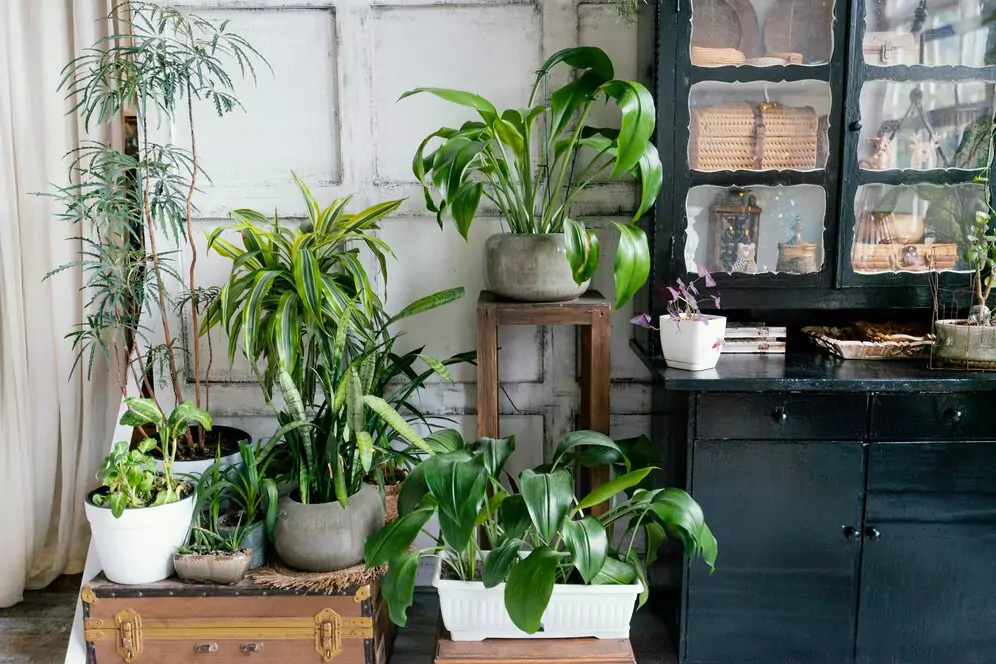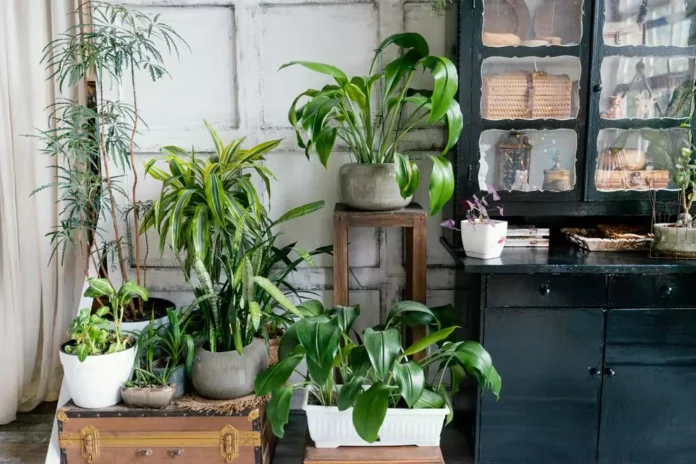Introduction: The Challenge of Gardening in Shady Spaces
Gardening in areas with limited sunlight can be a challenge. The lack of direct sunlight can make it difficult for plants to thrive and grow. However, with the right plants and a little bit of knowledge, it is possible to create a beautiful garden in shady spaces.
Choosing the right plants for shady areas is crucial. Some plants require full sun to grow and will not survive in areas with limited sunlight. It is important to select shade-loving plants that are adapted to low light conditions. These plants have evolved to thrive in the shade and can tolerate less sunlight than other varieties.

Understanding the Different Types of Shade
Not all shade is created equal. There are different types of shade, ranging from light shade to full shade. Light shade refers to areas that receive dappled sunlight throughout the day. Partial shade refers to areas that receive a few hours of direct sunlight each day, while full shade refers to areas that receive no direct sunlight at all.
Determining the type of shade in your garden is important because different plants have different light requirements. Some plants can tolerate full shade and will thrive in areas with no direct sunlight, while others require at least a few hours of direct sunlight each day.
The Importance of Choosing the Right Plants for Shady Areas
Choosing the right plants for shady areas is crucial for the success of your garden. Shade-loving plants are adapted to low light conditions and can thrive in areas with limited sunlight. These plants have larger leaves that allow them to capture as much light as possible, and they are often more tolerant of cooler temperatures.
Planting shade-loving plants has several benefits. First, these plants can add color and texture to your garden, even in areas with limited sunlight. They come in a variety of shapes, sizes, and colors, allowing you to create a visually appealing garden. Second, shade-loving plants are often low-maintenance and require less water and fertilizer than sun-loving plants. This can save you time and money in the long run.
Top 10 Most Resilient Plants for Shady Spaces
1. Hostas: Hostas are a classic choice for shade gardens. They have large, lush leaves that come in a variety of colors and textures. Hostas are low-maintenance and can tolerate a wide range of soil conditions.
2. Ferns: Ferns are versatile plants that can thrive in shady areas. They have delicate, feathery leaves that add a touch of elegance to any garden. Ferns are also low-maintenance and can tolerate moist soil.
3. Heucheras: Heucheras, also known as coral bells, are known for their colorful foliage. They come in a variety of shades, from deep burgundy to bright lime green. Heucheras are drought-tolerant and can add a pop of color to a shade garden.
4. Bleeding Hearts: Bleeding hearts are romantic and delicate flowering plants that thrive in shady areas. They have heart-shaped flowers that hang from arching stems, adding a unique touch to any garden.
5. Astilbes: Astilbes are showy and attractive plants that thrive in moist soil. They have feathery plumes of flowers that come in a variety of colors, from white to pink to red.
6. Japanese Forest Grass: Japanese forest grass is a low-growing grass that adds texture and movement to a shade garden. It has cascading leaves that come in shades of green, gold, and variegated.
7. Lungwort: Lungwort is a hardy perennial that thrives in shady areas. It has spotted leaves and clusters of flowers that come in shades of pink, purple, and blue.
8. Foamflower: Foamflower is a groundcover plant that spreads quickly and forms dense mats of foliage. It has delicate, frothy flowers that come in shades of white and pink.
9. Solomon’s Seal: Solomon’s seal is a graceful perennial that adds elegance to a shade garden. It has arching stems and dangling white flowers that bloom in late spring.
10. Coral Bells: Coral bells are known for their colorful foliage and delicate flowers. They come in a variety of shades, from deep purple to bright chartreuse.
Hostas: The Classic Shade-Loving Perennial
Hostas are one of the most popular plants for shade gardens. They are known for their large, lush leaves and come in a variety of colors and textures. Hostas are low-maintenance and can tolerate a wide range of soil conditions, making them a versatile choice for shady areas.
There are many different varieties of hostas, each with its own unique features. Some hostas have solid green leaves, while others have variegated leaves with stripes or splashes of white or yellow. Hostas also come in different sizes, from small miniatures to large giants.
Hostas are easy to care for and require minimal maintenance. They prefer moist, well-drained soil and should be watered regularly, especially during dry periods. Hostas can be divided every few years to prevent overcrowding and maintain their health.
Ferns: The Versatile and Low-Maintenance Option
Ferns are another great option for shady areas. They are versatile plants that can thrive in a variety of conditions, from dry shade to moist soil. Ferns have delicate, feathery leaves that add a touch of elegance to any garden.
There are many different types of ferns, each with its own unique characteristics. Some ferns have fronds that unfurl in the spring and die back in the winter, while others have evergreen foliage that remains green year-round. Ferns also come in a variety of sizes, from small groundcovers to tall, upright varieties.
Ferns are low-maintenance and require minimal care. They prefer moist soil and should be watered regularly, especially during dry periods. Ferns can be divided every few years to prevent overcrowding and maintain their health.
Heucheras: The Colorful and Drought-Tolerant Choice
Heucheras, also known as coral bells, are known for their colorful foliage. They come in a variety of shades, from deep burgundy to bright lime green. Heucheras are drought-tolerant and can add a pop of color to a shade garden.
In addition to their colorful foliage, heucheras also produce small, bell-shaped flowers in the summer. These flowers come in a variety of colors, from white to pink to red, and attract pollinators like bees and butterflies.
Heucheras are low-maintenance and require minimal care. They prefer well-drained soil and should be watered regularly, especially during dry periods. Heucheras can be divided every few years to prevent overcrowding and maintain their health.
Bleeding Hearts: The Romantic and Delicate Flowering Plant
Bleeding hearts are romantic and delicate flowering plants that thrive in shady areas. They have heart-shaped flowers that hang from arching stems, adding a unique touch to any garden.
Bleeding hearts come in a variety of colors, including pink, white, and red. They bloom in the spring and early summer and attract pollinators like bees and butterflies.
Bleeding hearts are low-maintenance and require minimal care. They prefer moist soil and should be watered regularly, especially during dry periods. Bleeding hearts can be divided every few years to prevent overcrowding and maintain their health.
Astilbes: The Showy and Attractive Option for Moist Soil
Astilbes are showy and attractive plants that thrive in moist soil. They have feathery plumes of flowers that come in a variety of colors, from white to pink to red. Astilbes bloom in the summer and add a burst of color to a shade garden.
In addition to their colorful flowers, astilbes also have attractive foliage. They have fern-like leaves that come in shades of green, bronze, and variegated.
Astilbes are low-maintenance and require minimal care. They prefer moist soil and should be watered regularly, especially during dry periods. Astilbes can be divided every few years to prevent overcrowding and maintain their health.
Tips for Successfully Growing Plants in Shady Areas
Successfully growing plants in shady areas requires some special considerations. Here are some tips to help you create a thriving shade garden:
1. Choose the right plants: Select shade-loving plants that are adapted to low light conditions. These plants have larger leaves that allow them to capture as much light as possible, and they are often more tolerant of cooler temperatures.
2. Prepare the soil: Before planting, amend the soil with organic matter like compost or well-rotted manure. This will improve drainage and fertility, which is especially important in shady areas where the soil may be compacted or lacking in nutrients.
3. Water regularly: Shade-loving plants still need water, even if they don’t require as much as sun-loving plants. Water your plants regularly, especially during dry periods, to keep the soil moist but not waterlogged.
4. Mulch: Mulching around your plants will help conserve moisture and suppress weeds. Use organic mulch like wood chips or shredded leaves, which will break down over time and improve the soil.
5. Monitor for pests and diseases: Shady areas can be more prone to pests and diseases, so keep an eye out for any signs of trouble. Remove any diseased or infested plants promptly to prevent the spread of pests or diseases.
Conclusion: Embrace the Beauty of Shady Spaces
Gardening in shady areas may present some challenges, but with the right plants and care, a shade garden can be just as beautiful as a sunny one. By choosing shade-loving plants that are adapted to low light conditions, you can create a garden that is lush, colorful, and full of life.
Embrace the beauty of shady spaces and experiment with different plants and combinations. With a little bit of creativity and knowledge, you can transform your shady areas into a thriving and visually appealing garden. So don’t let limited sunlight hold you back – embrace the challenge and create a garden that will bring you joy for years to come.


